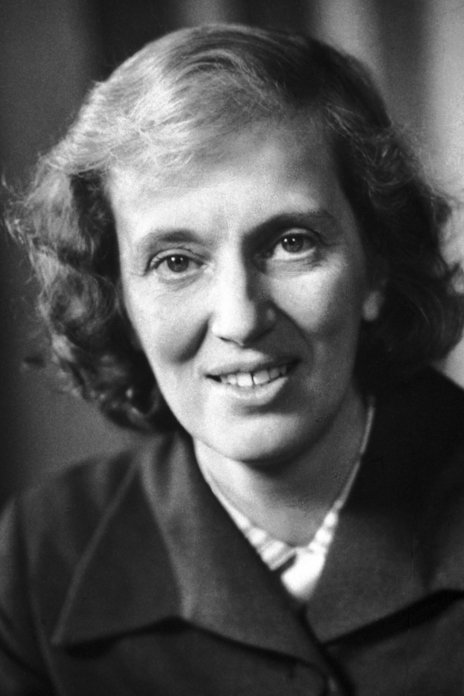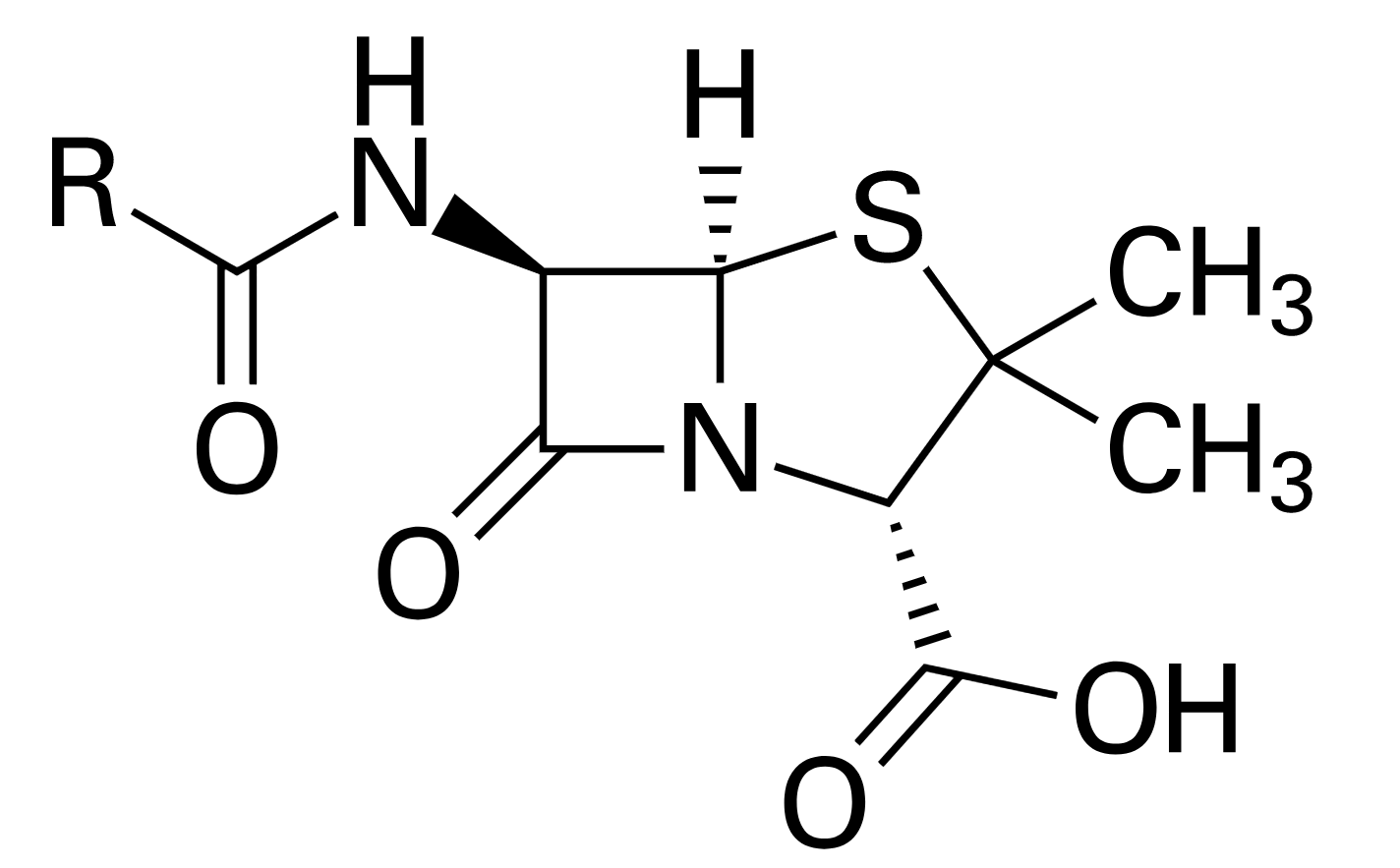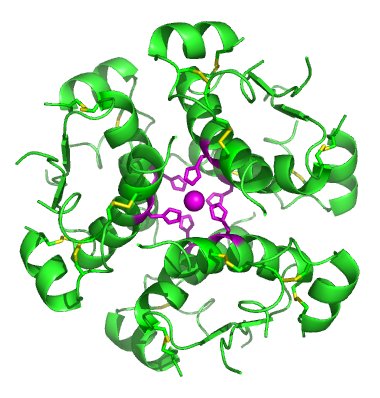.jpg?auto=compress%2Cformat&crop=faces&fit=crop&fm=jpg&h=360&q=70&w=540
)
Matteo Farinella
Meet Dorothy Hodgkin, the biochemist who pieced together penicillin, insulin, and vitamin B12
Her work helped save millions of lives from infection, diabetes, and anemia
Have you ever taken a penicillin-based antibiotic? They're some of the most commonly prescribed, including amoxicillin, augmentin, and methicillin. Do you or someone you know have diabetes? If so, Dorothy Hodgkin is a name you should know—her scientific accomplishments made your healthcare possible.
Hodgkin was the first person to uncover the structures of penicillin, vitamin B12, and insulin—discoveries which revolutionized healthcare and helped develop life-saving drugs. By solving the structure of these molecules, she unlocked two extremely important capabilities: the ability for scientists to make them in mass quantities for wide-spread use as drugs, and the ability for scientists to alter their structures, creating derivatives in order to create better drugs.
From an early age, Hodgkin was interested in the intersection of science and art. She came by it naturally: Her father was the director of multiple institutions, including the British School of Archaeology. Her mother was also an archaeologist, as well as being interested in weaving techniques, botany, and illustrating flowers. Her parents worked in North Africa, and although Hodgkin was sent to Sir John Leman School in England for school, she made yearly trips to visit them there. It was during these holidays that she became interested in chemistry and crystals, when a friend of her parents helped her analyze ilmenite, a titanium mineral.
.jpg)
Matteo Farinella
Returning to school, Hodgkin was one of only two girls allowed to join the chemistry class. At the time, girls were only taught “domestic science”—household skills, such as cooking and sewing. After graduating, Hodgkin joined her parents on an archaeology excavation, where she drew copies of uncovered mosaics, enjoying the dig so much she almost decided to become an archaeologist. But, with encouragement from her father, Hodgkin ultimately decided to continue studying chemistry at Somerville College, University of Oxford. “It was part of my father’s plan for me that I should be educated in the same way as a son, and therefore go to Oxford University,” she later wrote.
In her first year at Oxford, Hodgkin combined her love of chemistry and archaeology by analyzing glass tesserae, the small pieces of glass used to create mosaics. She joined a special class on X-ray crystallography, a technique which had recently been discovered that ascertains the atomic and molecular structure of a crystal. To do so, trained scientists, called crystallographers, shine x-rays through a crystal, and examine the pattern the x-rays make as they bounce off atoms. This reveals the atoms' arrangement, which can be pieced together to determine the compound’s molecular structure. X-ray crystallography is still used today, and considered the gold standard for determining the structures of most molecules.
Hodgkin was hooked. After graduating with first class honors, she moved to the University of Cambridge in 1932, to work toward her PhD with John Desmond Bernal, a pioneer in x-ray crystallography who was studying biologically relevant molecules. These include proteins, as well as smaller molecules that serve a biological purpose. Together, Hodgkin and Bernal were the first to show that proteins had a regular molecule structure. This gave one of the first glimpses into the molecular world of biology, and opened the door to using x-ray crystallography to study very complex molecules— which is exactly what Hodgkin did next.

Dorothy Hodgkin
Nobel Foundation
Hodgkin completed her PhD incredibly fast, after only two years, and Somerville College offered her a two-year research fellowship: one year at Cambridge and the next at Oxford. From 1934 until her retirement in 1977, she would remain at Oxford University, where in just 12 years, she climbed the ranks from an official fellow and tutor in natural science to university lecturer. Soon, Hodgkin was the university reader in x-ray crystallography, meaning she was the expert who everyone went to with questions.
Her string of important discoveries began when Hodgkin established an x-ray laboratory in Oxford’s Museum of Natural History in 1934. There, she began to investigate the molecular structure of insulin. However, she was serendipitously side-tracked in 1939 when Howard Florey asked for her help in his quest to better understand penicillin, the first antibiotic drug ever discovered. Florey had just isolated penicillin, and he wanted to know its structure to better understand how it worked against bacteria—so he turned to Hodgkin and her x-ray crystallography expertise. (Florey went on to successfully treat the first patient with penicillin in 1941).
Six years later, Hodgkin announced she had solved the puzzle, successfully unraveling penicillin's structure. This was incredibly important, as it allowed scientists to chemically synthesize penicillin in mass quantities for wide-spread use as antibiotic drugs. It was also the critical discovery needed for scientists to be able to alter penicillin's molecules, creating other more potent related antibiotics. Ironically, the same year Alexander Fleming, Howard Florey, and Ernst Boris Chain split the Noble Prize in Physiology or Medicine for their discovery and use of penicillin.
But Hodgkin's proposed structure was not so easily accepted by the scientific community. She showed penicillin had an atomic core made up of 3 carbon atoms and a nitrogen atom in a square-shaped ring—a never-before seen arrangement that was believed to be too unstable to exist. This now famous arrangement, called a β-lactam ring, was in fact part of what makes penicillin so unique.
Scientists not only doubted Hodgkin's structure, but also how she determined it. Racing against some of the best British chemists of the time, Hodgkin had solved the mystery not with chemical methods, but the relatively new—and still mistrusted—physical x-ray crystallography.

The structure of penicillin.
Hodgkin's discovery made the antibiotic era feasible, saving countless lives, and triggering a major decline in bacterial infection-related complications. Almost 75 years later, penicillin is still widely used today, as well as many of the important derivatives her work enabled, including amoxicillin, augmentin, and methicillin. For Hodgkin's work, she was eventually elected as a Fellow of the Royal Society (a world-renowned British scientific society) in 1947, where she was again one of the only women in the room—the first female Fellow was elected only two years earlier in 1945.
But she didn’t stop there—Hodgkin next turned her attention to vitamin B12, the active chemical isolated from liver extracts that was used to treat pernicious anemia. This severe disease, which was still deadly in the 1930s, is now known to be caused by a person's inability to absorb vitamin B12. Hodgkin's first x-ray analysis revealed that the vitamin contained over 1,000 atoms—multitudes more than the 39 atoms of penicillin, and certainly many more than any compound deciphered at that time by x-ray crystallography. Although Hodgkin's lab had steadily grown into a small army of undergraduate and graduate students, it wasn't until she started using computers that she was able to determine B12’s structure in 1956. Vitamin B12 is now known to have the most complex structure of all vitamins.
Her heroic efforts paid off. After being nominated multiple times, she won the Nobel Prize in Chemistry in 1964 “for her determinations by X-ray techniques of structures of important biochemical substances,” namely penicillin and vitamin B12. To date, she's the only female British scientist to receive a Nobel Prize. Not only did she illuminate the structures of compounds vital to human health, she also pushed the boundaries of chemistry and changed how chemists thought about studying molecules. She went on to add other impressive titles to her academic belt, including becoming a foreign member of the Royal Netherlands Academy of Sciences in 1956 and the American Academy of Arts and Sciences in 1960, the first Wolfson Research Professor of the Royal Society in 1960, and earning, in 1965, the Order of the Merit, the highest honor for achievement in science, the arts, and public life in Britain.

The structure of vitamin B12.
But Hodgkin never forgot about her first interest—the structure of insulin, a huge, intricate protein produced in the pancreas that is crucial in diabetes, as it regulates the metabolism. When Hodgkin began studying it, x-ray crystallography and computing were not advanced enough to fully understand its structure. But when she revisited insulin in the 1960s, the technologies had caught up to her. In 1969, Hodgkin and her team of young, international scientists revealed insulin’s structure for the first time, 34 years after she first captured an x-ray photo of an insulin crystal.
By discovering the structure of insulin, Hodgkin paved the way for the mass-production of insulin as a treatment for diabetes, which affects 9.4 percent of the US population today. (Another 34 percent of Americans have prediabetes, meaning they may need insulin treatment in the future).

The structure of insulin.
Isaac Yonemoto via Wikimedia
As if facing adversity as a woman in science and using pioneering analysis techniques weren’t enough, Hodgkin herself suffered from chronic illness. After giving birth to her first child at age 28, she developed an infection which led to chronic rheumatoid arthritis. Despite her swollen and distorted hands, she continued to conduct Nobel Prize-winning research, performing intricate manipulations to mount and photograph minuscule crystals of molecules.
Not only was she a phenomenal and respected scientist, she was also a political and social activist, pioneering for science and education on many frontiers. As the president of the Pugwash Conferences on Science and World Affairs from 1975 to 1988, she championed the research interests of scientists in developing countries and worked towards peaceful scientific progress with an international team of scientists. Margaret Thatcher, the United Kingdom's first female prime minister and one of Hodgkin's former undergraduate students, also sought both scientific and political advice from Hodgkin. (To cover all of Hodgkin's activism would require a whole other article!). If you're interested in learning more about this indomitable scientist, there's an excellent book called Dorothy Hodgkin: A Life,by Georgina Ferry.
